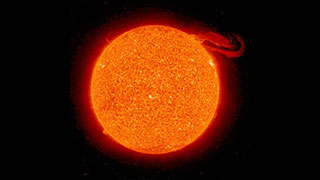Beating the Summer Heat
August 5, 2017
 The dog days of summer are upon us. For most of the northern hemisphere,
air conditioning and ice cream cravings are on full blast. Even Microwave
Journal editors Pat Hindle and Gary Lerude are finding ways to cool off
in the annual beach edition of Frequency Matters.
The dog days of summer are upon us. For most of the northern hemisphere,
air conditioning and ice cream cravings are on full blast. Even Microwave
Journal editors Pat Hindle and Gary Lerude are finding ways to cool off
in the annual beach edition of Frequency Matters.
Heat is a challenge for RF devices too. What do you call an RF signal at high temperature?
A heat wave. (groan)
Jokes aside, thermal management is a big deal. “Getting the heat out” ensures that RF systems operate reliably over a longer life span. Unfortunately, keeping temperatures in check isn’t as simple as taking your power amplifier or bulk acoustic wave (BAW) filter for a swim.
Temperature is a shared concern for the connected car and phased array radar. Yes, they do share something. Here’s why these applications get hot, and what you can do about it.
Keeping Cool with BAW and GaN
The connected car relies on BAW filters to avoid interference between adjacent frequency bands. These filters are often located in the shark fin mounted atop a car’s roof, where they’re subjected to high heat and intense temperature variations.
Filter frequency response — how a filter interacts with signals to allow some and block others — tends to drift over temperature. This is problematic when trying to avoid interference between closely spaced frequency bands. While drifting seems like an efficient way to create smoke and increase tire wear, filter drift can turn your favorite satellite radio channel into white noise.
Temperature compensated filters provide the solution. These advanced filter technologies, like Qorvo’s LowDrift™ and NoDrift™ BAW, are much more stable over heat and variation, keeping drivers locked in on their favorite tunes and talk radio stations.
Thermal management is also important in high power RF systems like phased array radar. By nature, these applications generate more heat. The key is keeping temperatures low enough for reliable operation.
We do this with GaN, a semiconductor technology that can handle the heat of power-hungry RF systems. With superior thermal characteristics, GaN can operate reliably at higher temperatures than competing technologies, like GaAs or silicon.
We’re talking above 200°C, which might seem cool if you’re visiting Mercury — but that’s twice as hot as boiling water on Mother Earth.
Specifically, GaN-on-SiC has excellent thermal properties and can be operated at higher temperatures while keeping the system cool enough to function properly — and there’s a direct relationship between temperature and life span. Next-gen radar systems built with GaN can operate reliably for seven-plus years longer than traditional technologies.
So, can we handle the heat?
Yes, we GaN! (groan)
This article first appeared in Brent's Musings on Microwave Journal.
Have another topic that you would like Qorvo experts to cover? Email your suggestions to the Qorvo Blog team and it could be featured in an upcoming post. Please include your contact information in the body of the email.
